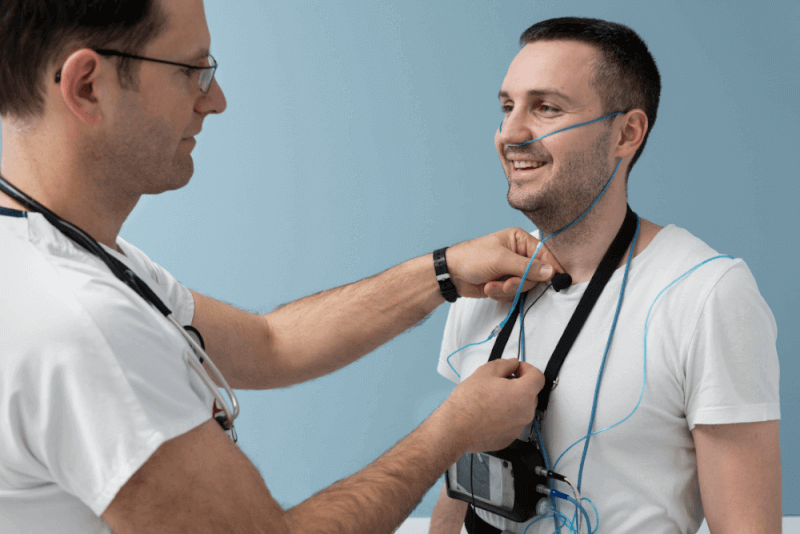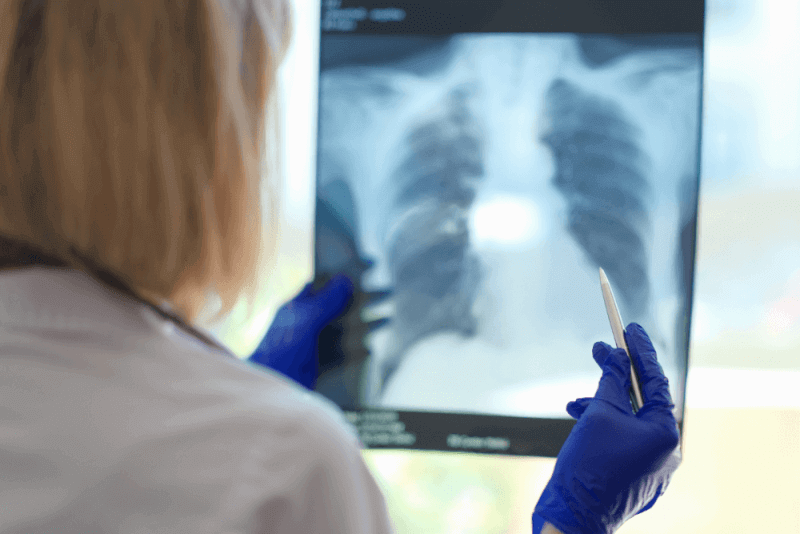Respiratory failure is one of the most common respiratory diseases. Basically, it is observed as a type of discomfort that occurs as a result of any damage to the respiratory system, resulting in insufficient oxygen and carbon dioxide exchange in the body. This disease, which occurs by limiting daily life activities in people, is one of the most important diseases with high risk factors if left untreated.
What is Respiratory Failure?
The lung is one of the most important organs in the respiratory system of our body. Any problem experienced in the lungs causes the respiratory system not to function properly. As a result of this situation, it cannot fulfill the breathing process, one of the most important functions of our body, as it is. This results in insufficient oxygen supply to tissues and organs. If we cannot supply enough oxygen to our tissues and organs through the blood, we are setting the stage for the emergence of various diseases and disorders.
Respiratory failure is generally observed as a condition related to the lungs. At this point, the lungs do not work effectively enough. Therefore, the body's oxygen supply is not fully met. As a result of this situation, functional problems occur when the carbon dioxide produced in the body is not excreted. This leads to more toxins accumulating in the body. In addition, blood and other body fluids become more acidic than they should be, leading to the onset of various diseases. Respiratory failure is also known as respiratory acidosis or acidification, as it affects the acidity to a great extent.
Respiratory failure is divided into two categories:
- Type 1 (hypoxemic) respiratory failure
- Type 2 (hypercapric) respiratory failure
Type 1 (hypoxemic) respiratory failure
It is known as a condition in which there is less oxygen in the body than there should be in the bloodstream.
Type 2 (hypercapric) respiratory failure
The bodyhas more carbon dioxide in the bloodstream than it should have.
The above-mentioned respiratory failure conditions can cause serious problems in both categories of diseases. For this reason, the patient needs urgent intervention. Although two different types of respiratory failure have been observed, they can develop in the body at the same time and can lead to irreversible complications if not treated in time.
Symptoms of Respiratory Failure
Respiratory failure is a type of disease with symptoms that differ depending on the ratio of oxygen and carbon dioxide in the blood. A lower than normal amount of oxygen in the blood leads to problems such as breathing difficulties and shortness of breath. It also causes dry skin and severe discoloration of lips and nails. Abnormally high levels of carbon dioxide in the blood cause poisoning of different tissues and organs. In addition to all these symptoms, the accumulation of harmful substances in cells increases, leading to various diseases. If the level of carbon dioxide in the body is too high, symptoms such as rapid breathing, irregular heart rate and confusion may occur.
In addition, some patients have the following symptoms:
- Muscle twitches
- Persistent drowsiness and lethargy
- Excessive headache
- Weakening of the decision-making mechanism
- Panic attacks and seizures
- Fainting
- Wheezing
- Cyanosis, a blue discoloration of the mouth, eyes and nails
- Orientation difficulties
They take their place among the above-mentioned possibilities that occur alone or in combination. If these complaints are observed, it is necessary to consult a specialist physician without wasting any time. Timely early diagnosis and treatment play a major role in saving patients' lives.
Causes of Respiratory Failure
Symptoms related to the respiratory system progress over time, leading to respiratory failure. Health problems in the muscles, nerves, bones and tissues that are part of the respiratory system can cause serious damage to the lungs. In addition, the causes of respiratory failure may vary depending on the type and intensity of the disease.
Causes of type 1 respiratory failure
- Pulmonary edema
- COPD disease
- Lung disorders
- Lung problems such as pneumonia, asthma, cystic, pneumothorax, bronchiectasis and fibrosis
- Covid-19
- Obesity and overweight
Causes of type 2 respiratory failure
- Brain and spinal cord injury
- Pulmonary edema
- Scoliosis-like diseases that affect the spine and severely damage the respiratory system
- Muscular dystrophy
- Poisoning due to drugs and similar causes
- Very serious lung diseases such as asthma and COPD
In addition to the above-mentioned symptoms, lung problems can also occur as a result of factorial consequences such as severe or mild blows to the chest area or traffic accidents. In addition, excessive alcohol and cigarette consumption, exposure to toxic air environments, stove poisoning, inhalation of harmful chemicals are also observed as other factors that threaten lung health and pave the way for the development of various diseases. Patients with symptoms of respiratory failure should consult a pulmonologist to determine the correct diagnosis and the correct treatment method. Accurate diagnosis and diagnostic methods play a major role in bringing the disease under control more quickly.
How is Respiratory Failure Diagnosed?
Correct diagnosis and diagnosis are among the most important factors in respiratory failure. Because a correct diagnosis and diagnosis is life-saving. In order for doctors to make the correct diagnosis, the patient must describe his or her complaints well. Information such as when the disease started and what kind of disorders the patient was exposed to are among the important factors in making the correct diagnosis. A definitive diagnosis and diagnosis should also be made with surgical examinations. A sensor called a pulse oximeter can measure the oxygen level in the blood. It is very important to examine these ratios well in order to treat the disease. Different tests are also performed to ensure accurate detection. These examinations are as follows:
- Arterial blood gas
- Blood test
- Lung X-ray
- Computed tomography
- Pulmonary function tests
Respiratory Failure Treatment Methods
The causes of respiratory failure are revealed when diagnosis and diagnostic methods are established as a result of different examinations. The treatment methods to be applied at this point vary according to the patient's health status, type and location. In this process, if the patient is a smoker, the treatment is initiated by quitting smoking. In addition, depending on the course of the disease during treatment, the following methods can be applied:
Oxygen Therapy
People with low oxygen content in the blood are treated with oxygen therapy that can be used at home.
Non-invasive Ventilation
A mask is placed over the face of the sick person and the patient breathes in this way.
Mechanical Ventilation
People who are ill are fitted with an endibation tube or tracheostomy tube. While the intubation tube is inserted through the mouth, the tracheostomy tube is one of the surgical procedures performed by inserting a tube into the larynx as a result of a surgical hole in the larynx.
With the right treatment method that observes the level of the disease and the general condition of the patient, it becomes possible to prevent possible symptoms that may develop in the patient. The main aim of treatment is to restore the patient's respiratory functions as soon as possible and, of course, to prevent life-threatening risks. Mild exercises and sports programs, which are observed as part of the treatment and practiced in many patients, are also taking their place. Because this makes it possible for the lungs to work better.













